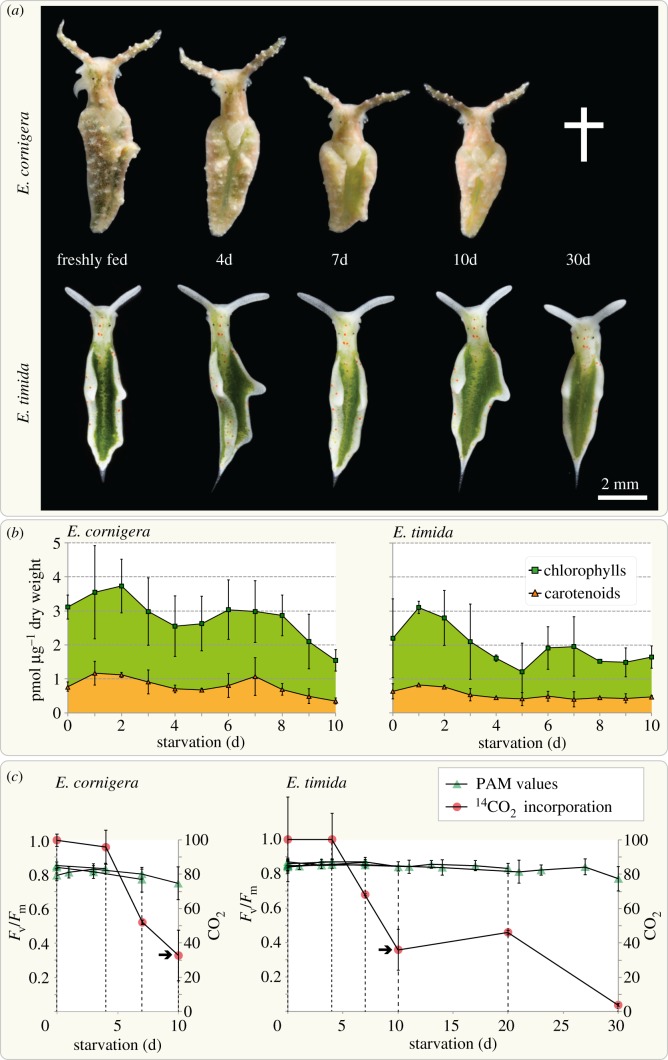Figure 1.
Elysia cornigera dies while showing comparable photosynthetic activity to E. timida during starvation. Adult slugs were fed on Acetabularia acetabulum and the effects of starvation at 25 µmol quanta m−2 s−1 on the photosynthetic capacity of both species evaluated. (a) Representative images of one single specimen of each species. Elysia cornigera shrinks more rapidly than E. timida, and while the E. cornigera specimens never survived starvation for more than two weeks, all E. timida specimens survived and retained an almost equal body length during the 30 d of starvation analysed. (b) Analysis of pigment concentration in relation to dry weight of the slugs during the first 10 days of starvation. Quantification was performed on three biological replicates per time point and normalized to an external standard; each pigment extract was derived from three to seven E. cornigera (in total 143 individuals) and two E. timida individuals (in total 66 individuals). (c) Assessment of the maximum quantum yield (Fv/Fm; measured using a PAM fluorometer) of photosystem II and net 14CO2 fixation relative to freshly fed animals (t0), during starvation within the same group of individuals. Each single Fv/Fm curve represents measurements on a group of at least 12 E. cornigera and nine E. timida specimens; from each group four E. cornigera (in total 48 individuals) and three E. timida (in total 54 individuals) were used for determining the 14CO2 incorporation after 0, 4, 7, 10, 20 and 30 days of starvation (latter two only for E. timida).

